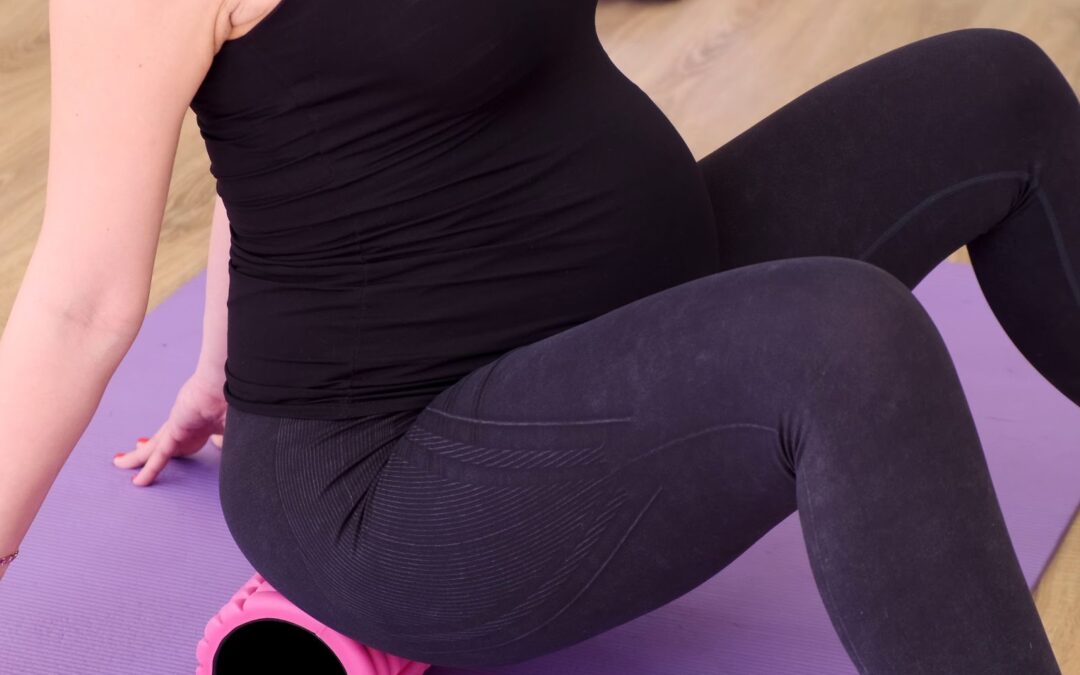Prenatal massage has grown in popularity in recent years due to the numerous health benefits it provides to both mother and baby. Prenatal massage is a type of massage that is specifically designed to comfort and relax pregnant women and their unborn babies. It has been scientifically proven to help with anxiety, sleep, stress hormones, circulation, and physical discomforts associated with pregnancy. Prenatal massage has many psychological benefits that can help mothers bond with their unborn child in addition to its known physical benefits. This article will go over how prenatal massage can benefit both the mother and the unborn child during pregnancy.
What is prenatal massage and what are its benefits for the mother and child?
Prenatal massage is a type of massage therapy that is designed specifically for pregnant women. It is designed to meet the needs of the expecting mother and her changing body. The massage therapist employs specialised techniques and movements to alleviate pain, reduce stress, and improve overall well-being. Massage during pregnancy can benefit both the mother and the developing baby.
Improved circulation and blood flow, reduced swelling in the extremities, increased relaxation, reduced stress and anxiety, improved mood, and a reduction in pregnancy discomfort are all benefits for the mother. Massage can also help with common aches and pains like back pain, neck pain, headaches, sciatica, swelling, and muscular tension.
The baby benefits from improved circulation and oxygenation via the placenta, as well as improved digestion and muscular development. Massage can also help the baby gain weight and lower the risk of preterm labour.
Prenatal massage is a safe and beneficial practice that can be used to support both the mother and the baby during pregnancy. Before starting any massage therapy programme, it is critical to consult with a qualified massage therapist.
How to find a prenatal massage therapist in your area?
1. Seek advice from friends and family.
2. Look for prenatal massage therapists in your area online.
3. Request referrals from your local hospital or birth centre.
4. Look for prenatal massage therapist reviews online.
5. Request a referral from your doctor or midwife.
6. Request a list of prenatal massage therapists from your local massage therapy association.
7. Inquire about prenatal massage programmes at local massage therapy schools.
8. Check with your health insurance provider to see if prenatal massage services are covered.
The different techniques used in prenatal massage
1. Swedish Massage:
A gentle massage technique that uses long, flowing strokes to relax and de-stress the body.
2. Deep Tissue Massage:
A type of massage that uses firm, deep pressure to relieve muscle tension.
3. Shiatsu Massage:
A massage technique that stimulates acupuncture points with finger and thumb pressure.
4. Abdominal Massage:
A massage technique that helps to loosen and relax the abdominal muscles.
5. Acupressure:
A massage technique that uses pressure to relieve pain and promote relaxation in specific areas of the body.
6. Reflexology:
A massage technique that involves applying pressure to specific points on the feet to relieve pain and promote relaxation.
7. Craniosacral Massage:
A type of massage that helps to relieve tension in the head, neck, and spine.
8. Lymphatic Drainage Massage:
A massage technique that promotes lymphatic drainage and reduces swelling and inflammation.
What to expect during a prenatal massage session?
Prenatal massage sessions usually last 45 minutes to an hour. The massage therapist will use a variety of techniques to gently massage the pregnant woman’s body during the session. The therapist will work to alleviate pain, such as lower back pain, while also encouraging relaxation. The massage can be tailored to the woman’s comfort level, focusing on areas of discomfort or relaxation. A gentle face or scalp massage may also be provided by the massage therapist. The massage should be given on a relaxing massage table with a body cushion to allow the woman to lie on her stomach or side.
Aftercare advice for mothers who have received a prenatal massage?
1. Drink plenty of water to rehydrate and flush out toxins from the massage.
2. For the next 24 hours, avoid strenuous exercise or activities.
3. After a massage, dress comfortably and avoid wearing clothing that is too tight.
4. Relax your muscles by taking a warm bath or shower.
5. Eat nutritious and healthy meals and snacks to stay energised and avoid dehydration.
6. For the next 24 hours, avoid caffeine and alcohol.
7. After your massage, rest and relax for the rest of the day.
8. Discuss any soreness or discomfort you may feel after the massage with your massage therapist.
Are prenatal massages good for pregnancy?
Prenatal massage is a type of therapeutic massage that is tailored specifically to pregnant women. The massage focuses on pregnancy-affected areas of the body, such as the lower back, hips, neck, and shoulders. The therapist will use techniques such as light to medium pressure, long strokes, kneading, and circular motions during a prenatal massage to help reduce tension and stress in the body.
Prenatal massage has numerous advantages. It can help to relieve stress and anxiety, as well as muscle and joint pain, improve circulation, sleep, and fatigue. It can also help with pregnancy discomforts like morning sickness, headaches, and backaches. Furthermore, prenatal massage can help to reduce the risk of preterm labour and improve the mother’s and baby’s overall health.
Expectant mothers considering prenatal massage should ensure that the therapist is properly trained and certified in prenatal massage. It is also critical to ensure that the therapist is aware of any medical conditions that the pregnant woman may be suffering from. It is also critical to ensure that the massage is given in a comfortable and safe environment, and that the woman feels at ease with the massage therapist.
Are prenatal massages safe for high risk pregnancy?
Prenatal massages are generally considered safe for most healthy pregnancies. High-risk pregnancies, on the other hand, may necessitate extra caution and may be contraindicated for massage therapy. If you are pregnant and have any underlying medical conditions or are at a higher risk for complications, you should consult with your obstetrician or midwife before receiving massage therapy.
If you have a high-risk pregnancy, you should exercise extra caution when considering massage therapy. This includes having a history of preterm labour, gestational diabetes, or miscarriage. In order to modify the massage appropriately, the massage therapist should be informed of any medical conditions or a history of complications.
It’s also worth noting that massage therapy should not be used in place of regular prenatal care. Prenatal massage should be used in conjunction with regular visits to your healthcare provider. Massage should not be used in place of any medical advice or treatment that your doctor has prescribed.
How often can you get a prenatal massage?
Prenatal massage is one of the most effective ways to relax and relieve stress while pregnant. They can not only help with pain relief, but they can also improve the overall health of both mother and baby. However, how frequently can you get a prenatal massage?
The answer is dependent on your specific needs, lifestyle, and health. A prenatal massage is generally recommended once a month, but it may be more or less frequent depending on your situation.
If you’re experiencing a lot of pain or other pregnancy-related issues, your doctor may advise you to get a massage more frequently. Many massage therapists will also provide package deals that allow you to receive multiple treatments at a reduced rate.
It’s important to note, however, that you shouldn’t get a prenatal massage too frequently. It can be taxing on your body and can lead to complications if done too frequently. Before beginning any treatments, it is best to consult with your doctor.
If you decide to get a prenatal massage, make sure you go to a reputable massage therapist who has worked with pregnant women before. It’s also critical to inform the massage therapist of any medical conditions or medications you’re taking, as this may affect the type of massage you receive.
Overall, prenatal massages can be an excellent way to unwind and relieve stress during pregnancy. Just make sure you get them from a qualified massage therapist and don’t do them too frequently.
How long does a prenatal massage last?
The length of a prenatal massage is determined by several factors, including the massage therapist’s experience, the area of focus, and the pregnant woman’s specific needs. Prenatal massages typically last 45 minutes to an hour, though some may be shorter or longer.
It’s important to remember that the purpose of a prenatal massage is to provide comfort and support to the mother-to-be during her pregnancy. As a result, the massage therapist will customise the massage for each woman, taking into account her physical condition, needs, and preferences. Some massage therapists, for example, may spend more time working on areas of tension and soreness, whereas others may focus more on relaxation.
It’s also worth noting that certain massage techniques and positions should be avoided while pregnant. Deep tissue massage and any massage that involves lying on the stomach, for example, should be avoided. The massage therapist will be aware of these limitations and will modify the massage as necessary.
A prenatal massage should, in general, be a relaxing and enjoyable experience. The massage therapist should provide a comfortable and safe environment for the pregnant woman, ensuring that she is relaxed and comfortable throughout the massage.
The length of a prenatal massage varies depending on the individual. However, it usually lasts between 45 minutes and an hour. Prior to the massage, it is critical to discuss your needs and preferences with the massage therapist so that they can create a massage tailored to your specific needs.
When is it too late for a prenatal massage?
Prenatal massage is a type of massage therapy that is designed specifically for pregnant women. It can help to relieve pain and discomfort associated with pregnancy, as well as reduce stress and improve circulation. However, prenatal massage is only considered safe and beneficial for a limited time. The massage therapist may be unable to safely provide a prenatal massage after the 37th week of pregnancy.
Because of the size of the abdomen, the massage therapist may be unable to reach certain parts of the body. Furthermore, the massage therapist may be unable to properly adjust the pregnant woman’s position for a safe and effective massage. Due to the changes in the woman’s body shape, the massage therapist may also be unable to properly access areas of the body.
Furthermore, due to the risk of labour, the massage therapist may be unable to provide the massage safely. Due to the risk of inducing labour, prenatal massage is not recommended after the 37th week of pregnancy.
Pregnant women should receive a prenatal massage before the 37th week of their pregnancy. The massage therapist may not be able to provide a safe and effective massage after this time. Before receiving a prenatal massage, it is critical to consult with the massage therapist and your doctor to ensure your safety and the best possible outcome.
Conclusion:
Overall, Prenatal massages can be an excellent way to promote relaxation, relieve stress, reduce anxiety, and provide relief from common pregnancy discomforts. Although there is no conclusive evidence to support the use of prenatal massages for overall health benefits, studies have shown that massage can be a safe and effective way to reduce discomfort, improve sleep, and improve overall wellbeing during pregnancy. As a result, before engaging in prenatal massage, women should consult with their doctor to ensure it is safe and appropriate for their specific situation.

